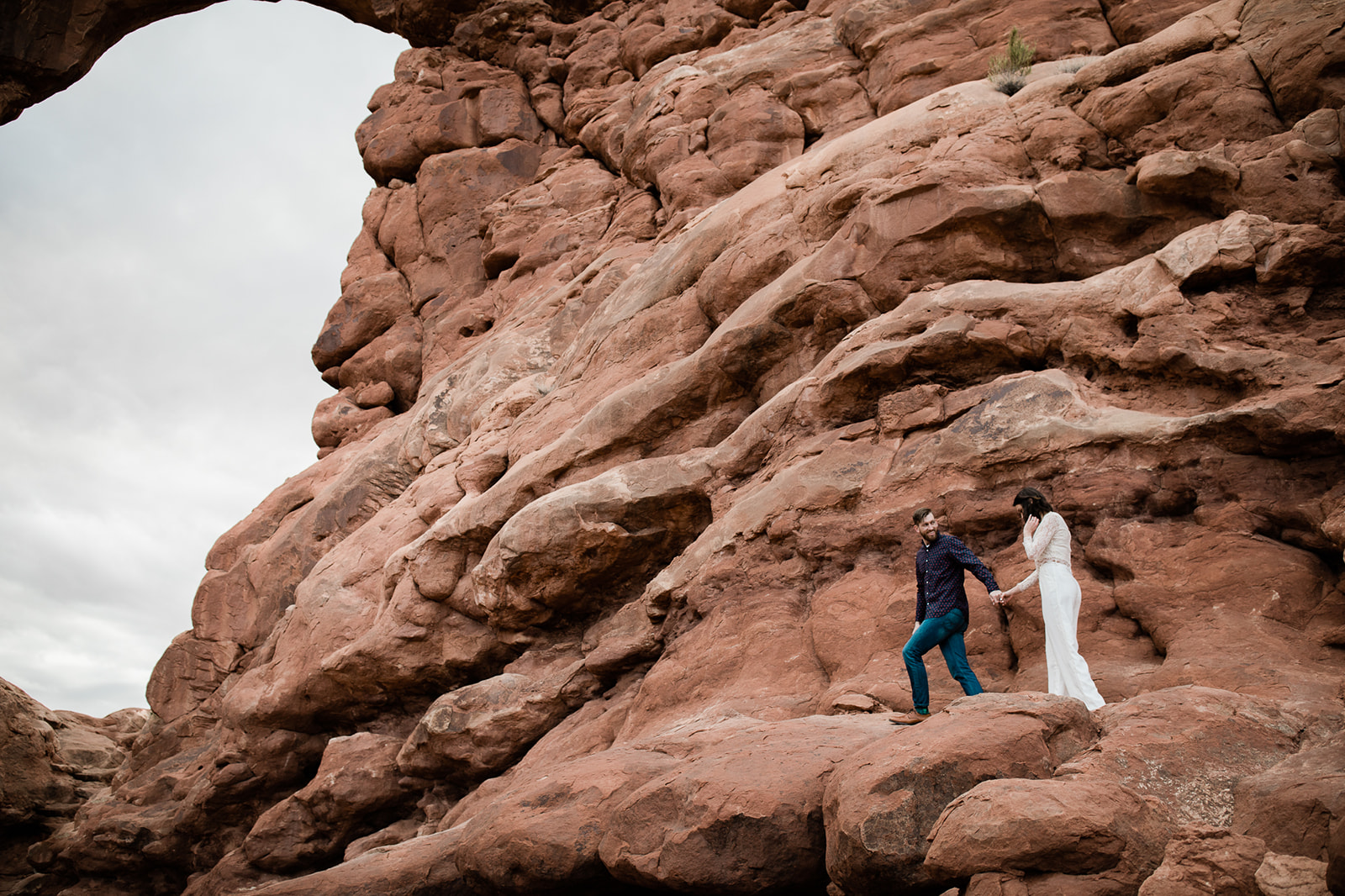I’m going to write something that is near and dear to my heart. As my husband and I travel around the west, living and camping in the most beautiful places in the country, and photographing couples in these places, I feel it’s my duty to do what I can to protect these natural landscapes.
There are seven principles that were developed by the Center for Outdoor Ethics that are essentially the golden rules of outdoor recreation. If you are going to be camping, hiking, or taking photos in natural areas, it’s important to familiarize yourself with these Leave No Trace principles and follow them closely. In essence, these principles are a code of ethics that will allow you to minimize your impact on nature, which is especially important for wedding and elopement photographers.
1) Plan Ahead and Prepare
When planning a wedding, elopement, or adventure session out in nature, it’s incredibly important to be as prepared as possible. That means understanding rules and regulations, following weather patterns, planning food and water, wearing appropriate clothing, and acknowledging your own physical abilities.
National and state parks often have unique rules and require permits for photography, so I make sure to familiarize myself with any and all regulations before I shoot anywhere.
This first “Leave No Trace” principle is probably the most important, especially since elopement photographers act as guides for our couples. I have a responsibility to keep us all safe and not break any rules.
2) Travel and Camp on Durable Surfaces
This principle is critical! It’s important to hike on designated trails only. If you do go off trail, then walking on sand, gravel, or rocks is considered ok because of their durability. You want to avoid trampling plants, brush, sage, and wildflowers. In the desert, it’s incredibly important to be careful not to step on living soil, aka cryptobiotic soil or “crypto.” It’s basically a crust that is extremely fragile to foot traffic and vehicles, but it literally holds the desert together. Once disturbed, this living soil crust can take years or even decades to repair itself. So please, please, please, do not walk off trail unless you are certain you are walking on a durable surface.
3) Dispose of Waste Properly
You have probably seen signs on trails and campsites that say “Pack it in, pack it out.” Basically, whatever you bring to a location in terms of waste and garbage, should leave with you. That includes champagne corks, bits of flowers from bouquets, ribbons, vow books, toilet paper, orange and banana peels, chicken bones, cigarette butts, sunflower seeds, and all the other weird things people tend to throw on the ground.
4) Leave What You Find
This principle is fairly simple. Don’t pick flowers, leaves, or take sticks. Don’t take rocks. Don’t damage trees or plants. Leave everything the way you found it. Picking wildflowers for an impromptu bouquet is frowned upon.
5) Minimize Campfire Impacts
This principle is less likely to apply to weddings and elopements unless you are camping overnight, but important to keep in mind. The best place to build a campfire is in an existing fire ring at a campsite. But before you build your fire, double check to see if there are any fire restrictions in your area. It’s also important not to travel with firewood, as it can spread disease. We purchase wood at our destination and are hesitant to collect any wood from around our campsite so as to lessen our impact.
It’s important to burn any wood to ash and dump water over it to thoroughly extinguish it.
6) Respect Wildlife
It is best to observe wildlife from a distance and do your best not to disturb them. It’s also important not to feed wildlife or leave food and waste outdoors where they have access to it. I will never ask my couples to approach wildlife for a photo-op.
7) Be Considerate of Other Visitors
It’s important to be considerate of other people and allow everyone to enjoy their experience in nature. When hiking, it’s common courtesy for the people heading downhill to stop and move over for the people heading uphill. When reaching a summit or scenic viewpoint, it’s important that we take our photos quickly, and then allow other hikers and visitors to enjoy the views. It’s also important to be quiet and not disturb other people. If we are secluded, then this is less of an issue, but I do photograph couples in fairly busy and popular view points where these principles definitely apply.
